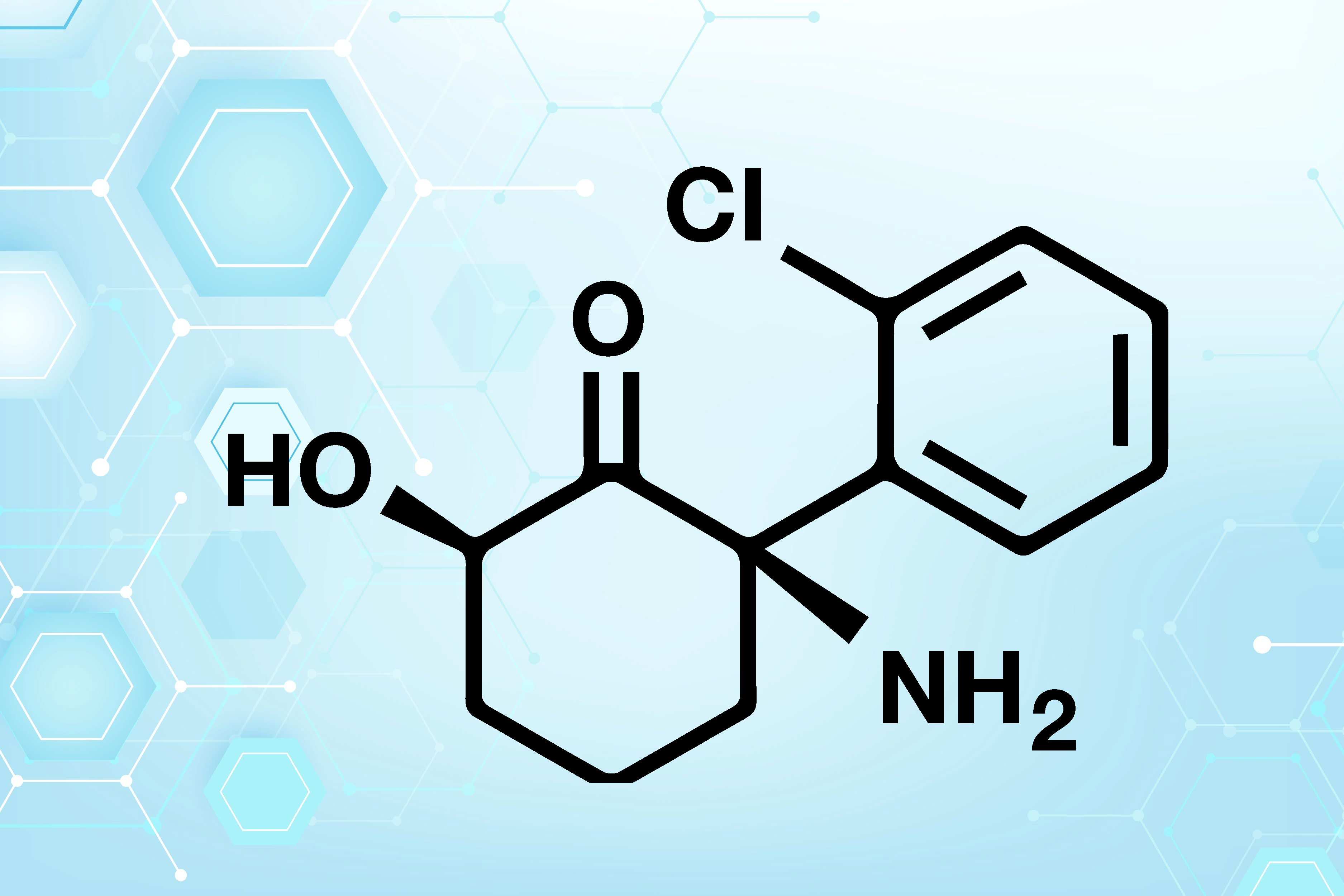NCATS-Developed Ketamine Alternative Was Safe, Didn’t Cause Dissociation in Phase 1 Clinical Trial
September 3, 2024
In a broad collaborative effort, NCATS scientists have helped develop a novel form of ketamine that could act as an antidepressant without ketamine’s sedation or dissociative symptoms. Findings from an early-stage clinical trial showed the ketamine metabolite, (2R,6R)-hydroxynorketamine (RR-HNK), was safe in people and didn’t cause ketamine’s negative side effects. The research team’s work could lead to a new treatment option for depression and pain.
“This study is an important milestone in our longstanding effort to develop effective ketamine-like antidepressants that lack the dissociative effects and abuse potential of ketamine,” said study coauthor Todd Gould, M.D., of the University of Maryland School of Medicine. Gould led the basic science research that discovered the therapeutic potential of RR-HNK.
Ketamine is an anesthesia drug that also has shown promise as a pain reliever and an antidepressant. The drug can have dissociative and hallucinogenic effects in people, however. Ketamine also can be misused or abused. The U.S. Food and Drug Administration (FDA) has approved a related formulation, esketamine, to treat major depressive disorder or treatment-resistant depression. Like ketamine, esketamine can have sedative, dissociative side effects and the potential for misuse.
RR-HNK is a substance that remains in people’s systems after their bodies break down ketamine. Unlike ketamine and esketamine, RR-HNK does not possess dissociative or sedative properties. NCATS led the preclinical studies needed to earn RR-HNK FDA approval as an investigational new drug in preparation for clinical trials in people.
In a new phase 1 clinical trial, a research team from Duke University, NCATS, the National Institute of Mental Health, the National Institute on Aging and their colleagues tested the safety and tolerability of RR-HNK in people. Their results appear in the journal Clinical Pharmacology & Therapeutics.
In the study, researchers tested intravenous RR-HNK in healthy adults at multiple doses and administration schedules. They also compared RR-HNK with placebo. The primary goal was to assess the drug’s safety.
None of the people who received RR-HNK had serious adverse events. Importantly, there were no anesthetic, sedative or dissociative effects at any of the doses tested. Those side effects were absent even though maximum RR-HNK concentrations at all study doses were much greater than those seen after a standard dose of ketamine.
“The preclinical evidence suggested that RR-HNK would lack anesthetic and dissociative side effects. This first-in-human study is a terrific validation of that data,” said the study’s senior author, Craig Thomas, Ph.D., of NCATS.
The researchers also measured gamma waves in study participants’ brains. Gamma waves are one of the few biomarkers of ketamine-related antidepressant activity. The research team found that some people who received RR-HNK in the clinical trial showed increases in gamma oscillations and power, compared with those receiving placebo.
“Having such a clean safety profile in the phase 1 trial results supports moving RR-HNK to phase 2 clinical trials,” said Carlos Zarate, Jr., M.D., of the National Institute of Mental Health. Zarate will lead clinical trials of RR-HNK in people with treatment-resistant depression.



